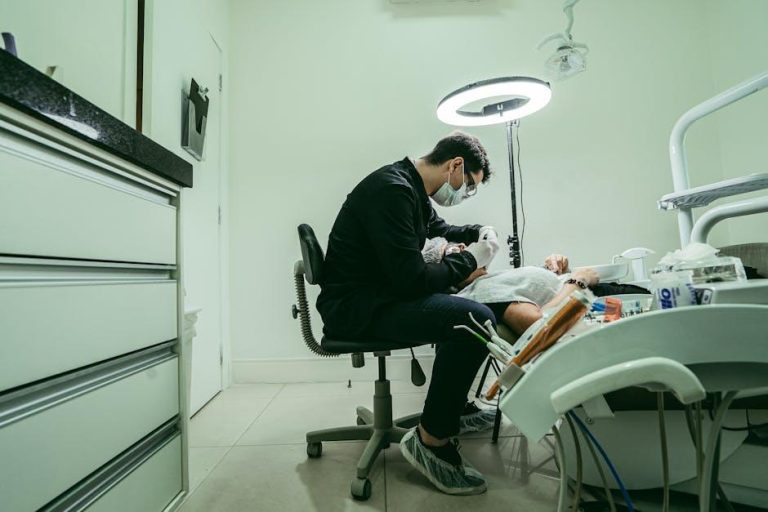
What Qualifies As A Dental Emergency? – Texas A&M
Dental emergencies can strike unexpectedly at any time and often require immediate attention to prevent severe complications. Whether you’re a Texas A&M student, faculty, or a local resident, understanding what qualifies as a dental emergency is essential for timely and effective care. In this comprehensive guide, we’ll explore the most common types of dental emergencies, how to recognize them, and the best steps to take when faced with an urgent dental issue.
Understanding Dental Emergencies: A Clear Definition
A dental emergency is any oral health problem that requires immediate or urgent care to save a tooth, stop ongoing tissue bleeding, relieve severe pain, or address infections that could harm overall health. Ignoring a dental emergency can result in worsening pain, infection spread, permanent tooth loss, or long-term damage to your oral structures.
Why Immediate Response Matters
- Prevents complications such as abscesses or jaw infections
- Maximizes the chances of tooth preservation
- Reduces intense pain and discomfort
- Helps to avoid costly and extensive treatments later
Common Types of Dental Emergencies
| Dental Emergency | Description | Immediate Actions |
|---|---|---|
| Knocked Out Tooth (Avulsed Tooth) | A tooth completely dislodged from its socket due to trauma. | Rinse gently, attempt to reinsert, keep moist, and see a dentist within 1 hour. |
| Severe Toothache | Persistent, intense pain that may indicate infection or decay. | Rinse mouth, use pain relief, and schedule immediate dental care. |
| Cracked or Broken Tooth | Partial or full breakage of a tooth, often caused by injury or biting hard objects. | Save broken pieces, rinse mouth, eat soft foods, and visit dentist promptly. |
| Lost Filling or Crown | When a filling or crown comes out, leaving the tooth exposed and vulnerable. | Keep the restoration if possible, avoid chewing on that side, and get urgent care. |
| Abscess or Infection | A painful, pus-filled swelling caused by bacterial infection in the tooth or gums. | Rinse with saltwater, manage pain, and see a dentist immediately to prevent spread. |
| Soft Tissue Injuries | Bleeding or lacerations to lips, cheeks, gums, or tongue caused by trauma. | Apply pressure with sterile gauze, rinse gently, and seek emergency care if heavy bleeding. |
Identifying Symptoms That Require Urgent Dental Care
Not every dental issue needs emergency treatment, but certain symptoms always demand prompt attention. Watch for the following signs:
- Uncontrolled bleeding from the mouth or gums
- Severe or escalating pain not relieved by over-the-counter medication
- Swelling of the face, jaw, or neck
- Fever combined with tooth or gum pain
- Difficulty breathing or swallowing
- Visible displaced or knocked-out teeth
- Broken braces or wires causing injury inside the mouth
First Aid Tips for Managing Dental Emergencies
While professional dental care is the ultimate solution, the right first aid can minimize damage and pain before reaching a dentist.
- For a knocked-out tooth: Hold by the crown (top), rinse under warm water if dirty, try reinserting, and keep the tooth moist (use milk or saliva).
- For a broken tooth: Save any broken pieces, rinse mouth with warm water, and use cold compresses to reduce swelling.
- For toothache: Rinse mouth with warm salt water, floss to remove trapped food, and take pain relievers as directed.
- For soft tissue injuries: Apply gentle pressure with clean gauze to stop bleeding and avoid irritating the wound.
- For lost crowns or fillings: Avoid eating on the affected side and protect the tooth with dental cement from a pharmacy if possible.
Benefits of Prompt Emergency Dental Care
Seeking urgent care after a dental emergency comes with numerous advantages that improve health outcomes and comfort:
- Preserves natural teeth and avoids extractions
- Prevents infections from spreading to other parts of the body
- Reduces patient suffering with immediate pain control
- Shortens recovery time and minimizes the extent of treatment required
- Protects your overall oral and systemic health
Real Case Study: Emergency Care at Texas A&M Dental Clinic
At Texas A&M’s dental clinic, we recently treated a student who experienced a traumatic sports injury resulting in a knocked-out front tooth. Acting swiftly, our dental team was able to successfully reimplant the tooth within the critical hour. With follow-up care and protective procedures, the patient maintained their natural smile and avoided the need for implants or dentures.
Lessons learned:
- Immediate care is crucial for saving avulsed teeth.
- Knowing first aid steps empowers patients and caregivers.
- Access to emergency dental services at Texas A&M ensures quick treatment.
When and How to Contact Texas A&M Emergency Dental Services
If you or someone you know experiences any of the symptoms or injuries described above, don’t wait. Texas A&M Dental Clinic offers emergency dental services with trained professionals ready to provide expert care. Follow these steps:
- Call the Texas A&M Dental Clinic emergency line immediately.
- Describe your symptoms or injury clearly and follow any instructions given.
- If necessary, visit the clinic or an emergency room for severe trauma or systemic symptoms.
- Bring any broken teeth, crowns, or dental appliances with you to your appointment.
Conclusion
Dental emergencies can be frightening and painful, but recognizing what qualifies as a true emergency and responding quickly can make all the difference. Whether it’s severe tooth pain, a knocked-out tooth, or a broken crown, timely action not only relieves discomfort but also preserves your long-term oral health. Texas A&M’s dental professionals are committed to providing fast, effective emergency dental care tailored to every patient’s needs. If you face a dental emergency, trust the experts—your smile deserves the best.
Remember: Not all dental issues are emergencies, but when in doubt, it’s better to seek prompt evaluation to protect your oral and overall health.


